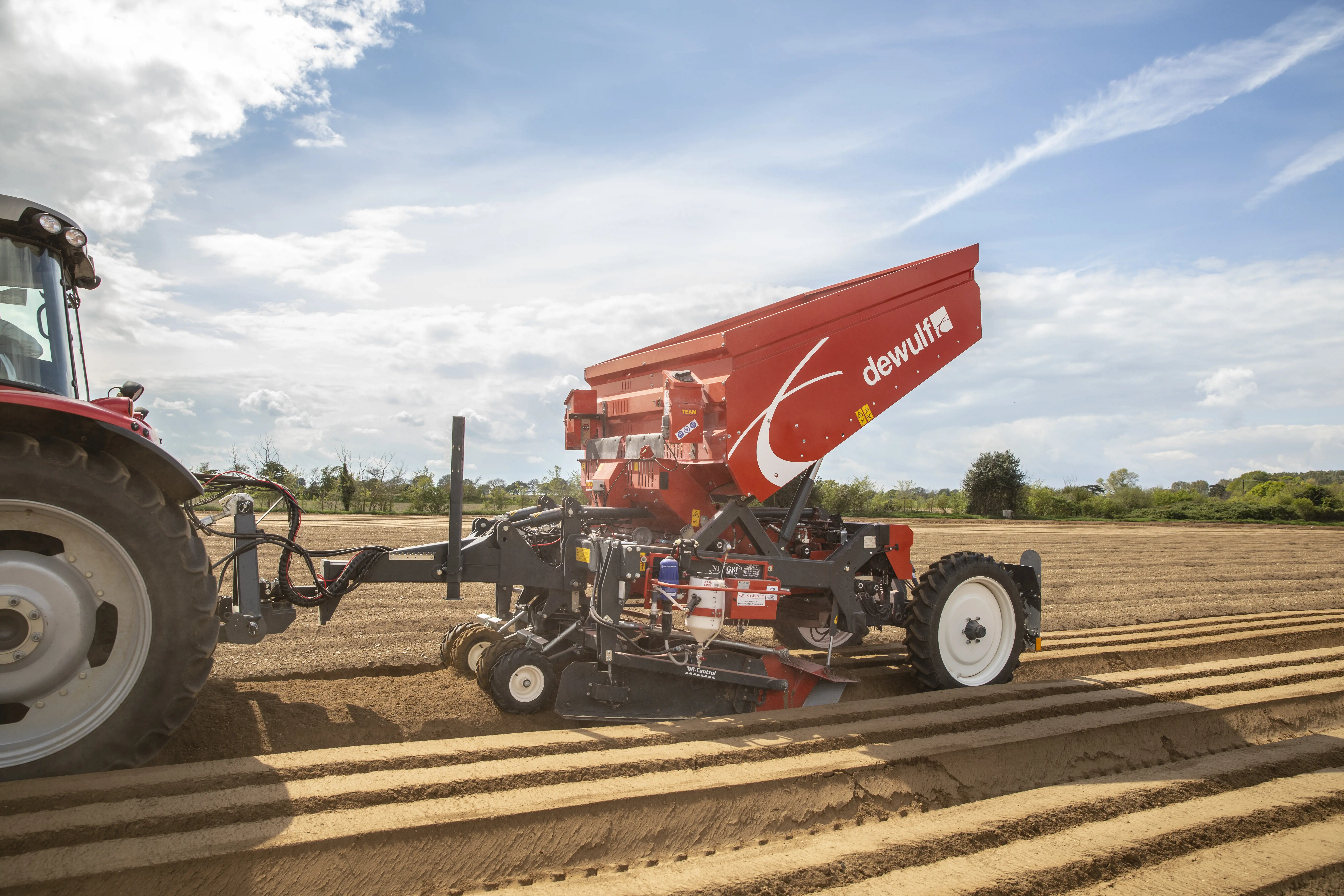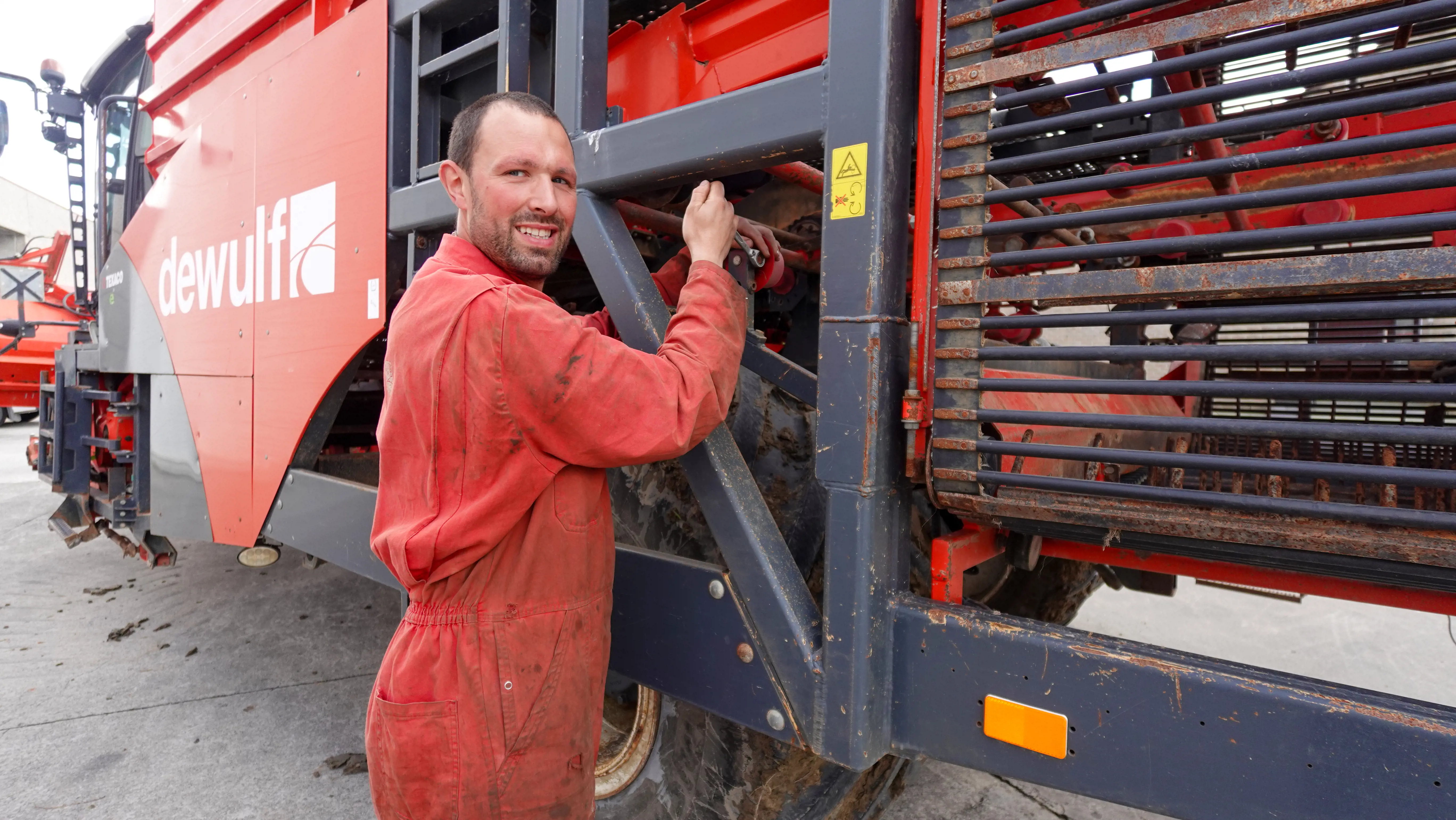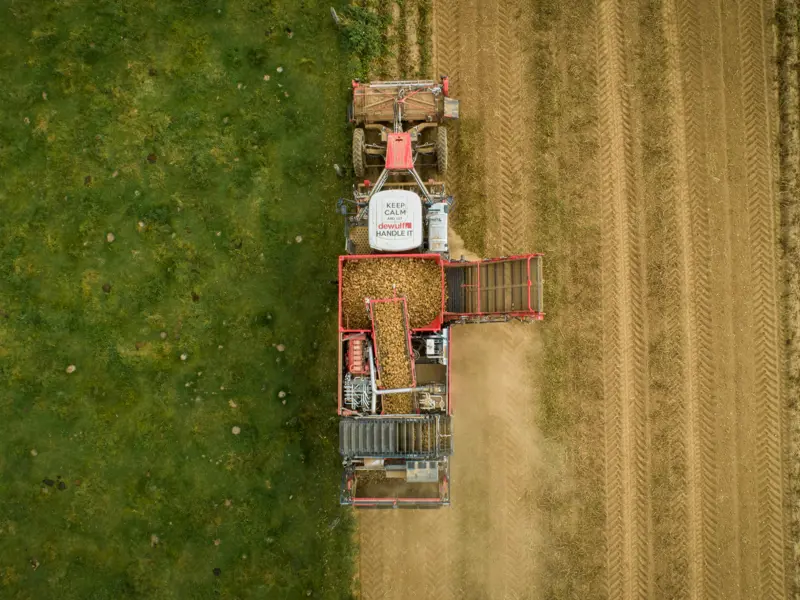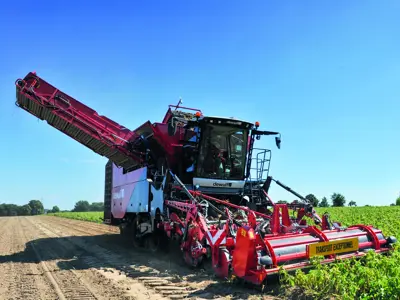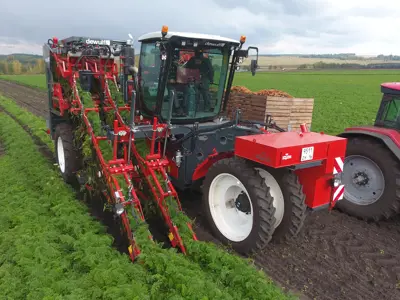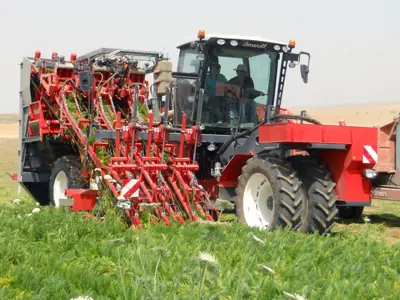Self-propelled harvester's popularity explained
06/06/2024
Are you all set for the coming harvesting season? In recent years, we have noticed an undeniable shift at Dewulf (and beyond): contractors and growers are increasingly opting for self-propelled harvesters over trailed harvesters. There are a number of specific, identifiable reasons for this shift, which we would like to discuss in this blog.
Introduction to self-propelled harvesters
A self-propelled harvester does have some benefits compared to trailed or mounted variants. Self-propelled harvesters are the present and the future, as they usually use advanced technologies: from sophisticated GPS navigation to numerous sensors and even automatic steering. These features allow growers and contractors to leave certain tasks to the self-propelled harvesters, which the machines can perform with utmost precision and efficiency. The users can then focus on other important aspects of the harvesting process.
In addition, not only are self-propelled harvesters equipped with features such as automatic steering, but they also continuously collect data throughout the harvesting process. This data can be analysed to gain further insight into key factors such as yield and fuel consumption, and, by the way, the latter is often a lot lower for self-propelled harvesters than trailed combinations.
Reasons why self-propelled harvesters are gaining traction
The industry is changing
Today, the agriculture industry is more consolidated than ever. There are fewer growers and, in turn, they have ever-increasing acreage. The result? A more extensive area that logically entails a longer harvesting period. As a result, there is a greater need for specific equipment, such as a self-propelled harvester, that can simply keep going longer (and better).
To efficiently manage vast agricultural areas, it is crucial to be able to harvest when needed, and perhaps even more so under less favourable conditions. A self-propelled harvester offers more control so you can harvest when there is no time to lose, while also being extremely flexible when required. With a Dewulf machine, you can also go that extra mile, so you can get the last potato or carrot out of the ground in the most challenging conditions. That ability to keep harvesting has proved necessary more than once in recent years during an autumn period that can be very wet in Western Europe.
Better results with a self-propelled harvester
It practically goes without saying that a 4-row self-propelled harvester can achieve double the hourly output of a 2-row self-propelled harvester. Moreover, the cost of a tractor with a trailed machine and the cost of a self-propelled harvester will be in the same order of magnitude. A self-propelled harvester is even more fully equipped, with a larger bunker versus a trailed machine, for example. This results in more capacity as well as a higher degree of flexibility for the user of a self-propelled harvester.
Igor Nochevka, potato grower from Kazakhstan:
"With the Dewulf Enduro, we achieve an impressive capacity of up to 11 km/h."
Comfort and ease of operation
If you need to harvest larger areas in longer harvest seasons, comfort is an essential factor to consider. If you drive a self-propelled harvester, there is no need to look back, as the harvesting process mainly takes place in front of and below the cab. This undoubtedly provides better ergonomics in a well-equipped, contemporary cabin.
A self-propelled harvester also simplifies the harvesting procedure for a single operator. Options such as using a haulm topper are not available on a trailed machine without involving a second operator and a tractor in the process. A self-propelled harvester can perform all these functions for the driver. This also allows adjustments to be made, based on field conditions, in real time.
Impact of climate change on harvesting
Today's weather patterns have become highly variable. In the past, growers were pretty much guaranteed an extended period of days suitable for harvesting during which it would only rain for one to two days at a stretch, after which they could resume their work without interruption. Today, they must deal with many more outliers. Prolonged periods of extreme rainfall or drought have greatly diminished their sense of certainty. Those changing weather conditions also entail a number of consequences.
Harvest early, minimise losses
Due to unpredictable weather patterns, the main objective among growers now is to get the harvest in as quickly as possible, keeping the risk of losses at a minimum. Although it may seem paradoxical, a self-propelled harvester provides both greater control and increased flexibility. A sudden spell of good weather during a rainy period? A self-propelled harvester is ready to go immediately, maximising your capacity. Moreover, in a wide range of weather conditions, including wet, difficult conditions, a self-propelled harvester can keep harvesting and continue for longer than a trailed one.
Resilience
As the weather has become much more unpredictable, it is highly recommended for growers to be even more agile in their operations. The adaptability of a self-propelled harvester fits perfectly with this need for flexibility. The responsiveness allows it to easily adapt to changing weather conditions. Moreover, you optimise harvesting within a more limited time frame with a self-propelled harvester.
Soil becoming increasingly important
Self-propelled harvesters cause less soil compaction and reduce damage to headlands. Keeping soil compaction to a minimum is always a primary objective, as maintaining healthy soil structure is beneficial in the longer term anyway. Both with the 4-row Enduro on tyres and its tracked counterpart, the Kwatro (Xtreme), Dewulf is top of the class in its market segment in this respect. Your ability to protect the structure of the subsoil will always improve your cultivation process in the long run. Indeed, better and healthier subsoil will be able to support and withstand a heavy load better, reducing the impact of your machine and allowing the soil to recover even more quickly after harvesting.
Moreover, there are also regions and countries, like Scotland, where the introduction of a bunker harvester like the RCA3060 initiated a lasting change: the classic wagon harvester was gradually replaced by a bunker harvester, which meant that tractors with heavy carts, especially in wet conditions, were no longer constantly compacting the soil of the waterlogged fields.
The advantages of self-propelled harvesters at a glance:
- Higher efficiency and accuracy through advanced technologies
- Automation of tasks by machines and continuous data collection, freeing users to focus on other critical aspects of the harvesting process
- More specific equipment that allows you to continue working longer and better, even – and especially – in less favourable conditions
- Increased capacity, output per hour and flexibility for the user
- Comfort, ease of operation, ergonomics and simplified harvesting procedure
- Better soil management in the long term (less soil compaction, which preserves soil structure)
- Easily adaptable for different crops and conditions
- Problems are detected faster, minimising downtime
So, it is true that there are more and more reasons to opt for a self-propelled harvester instead of a trailed harvester. Still unsure which machine best suits your acreage or is most efficient? Our Dewulf experts will gladly help you find a crop-optimal solution, based on the desired quality of the end product.

 English
English
 Nederlands
Nederlands
 Deutsch
Deutsch
 Français
Français
 Polski
Polski
 Espagnol
Espagnol
 русский
русский
